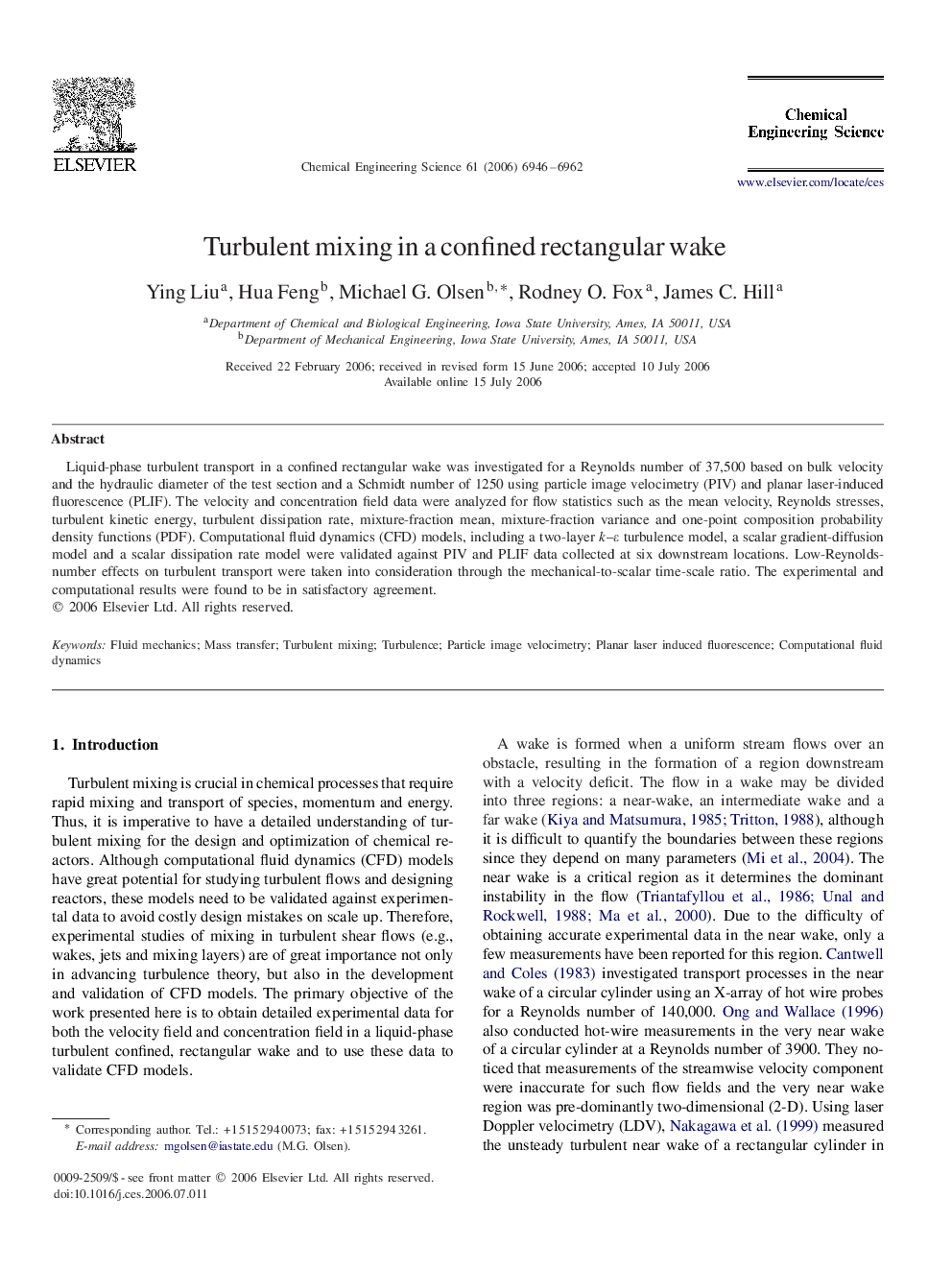| Article ID | Journal | Published Year | Pages | File Type |
|---|---|---|---|---|
| 159444 | Chemical Engineering Science | 2006 | 17 Pages |
Liquid-phase turbulent transport in a confined rectangular wake was investigated for a Reynolds number of 37,500 based on bulk velocity and the hydraulic diameter of the test section and a Schmidt number of 1250 using particle image velocimetry (PIV) and planar laser-induced fluorescence (PLIF). The velocity and concentration field data were analyzed for flow statistics such as the mean velocity, Reynolds stresses, turbulent kinetic energy, turbulent dissipation rate, mixture-fraction mean, mixture-fraction variance and one-point composition probability density functions (PDF). Computational fluid dynamics (CFD) models, including a two-layer kk–εε turbulence model, a scalar gradient-diffusion model and a scalar dissipation rate model were validated against PIV and PLIF data collected at six downstream locations. Low-Reynolds-number effects on turbulent transport were taken into consideration through the mechanical-to-scalar time-scale ratio. The experimental and computational results were found to be in satisfactory agreement.
